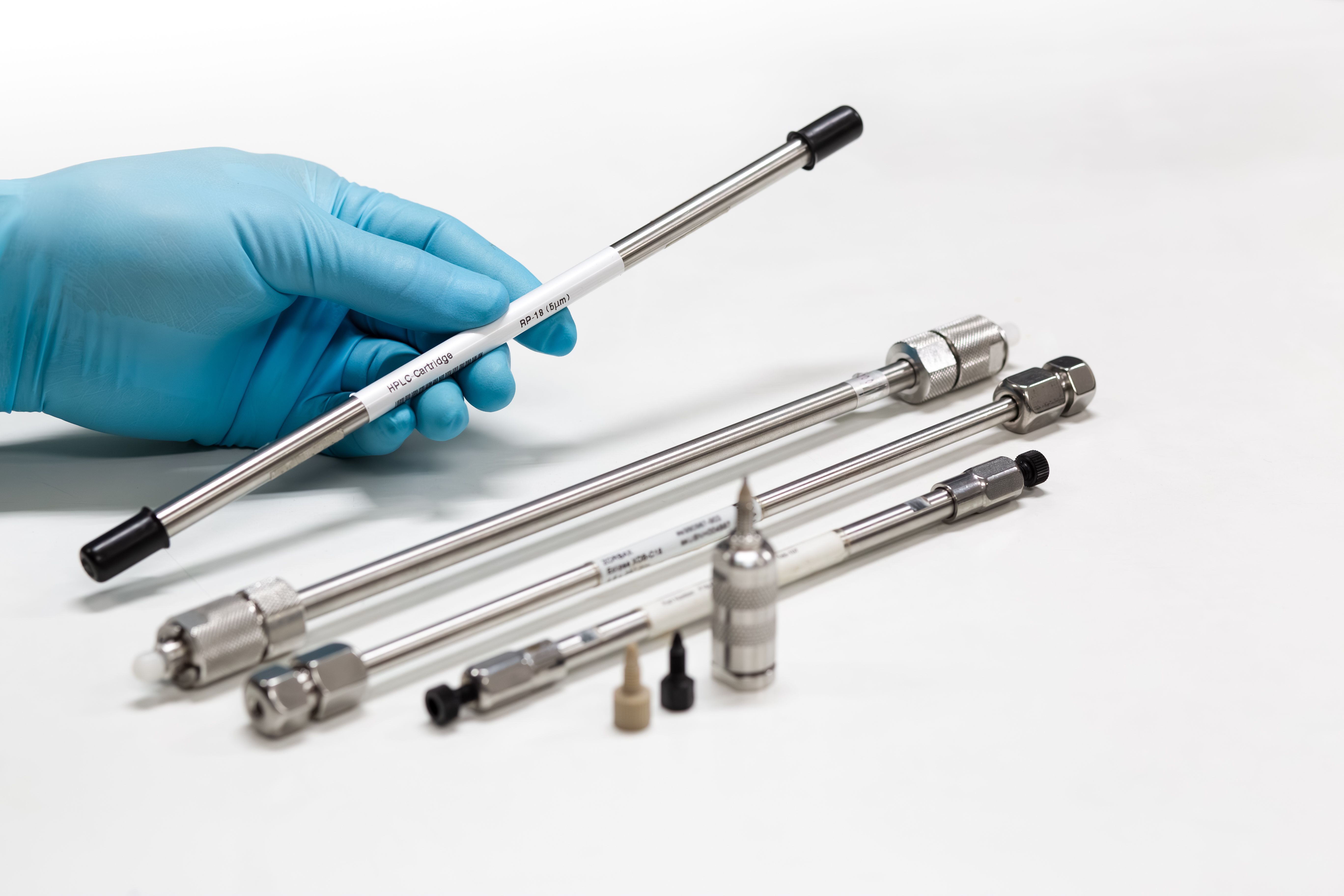Deep Eutectic Solvents and Their Use in Sample Preparation, Microextraction, and as Mobile Phase Additives in Chromatography
Enhancements in chromatographic performance were reviewed as were experimental concerns, both pointing toward using specific solvents to influence more sustainable industrial development.
New research in the journal Talanta explores what a group of authors call “new horizons” in the application of deep eutectic solvents (DESs) in chromatographic separation (1). Their investigation reviews recent developments and advancements as well as challenges, suggesting that further research be conducted about the potential of future approaches of using DESs in separation methods.
The researcher's hand shows the Cartridge column chromatography of the HPLC instrument. In addition, Cartridge column chromatography with guard cartridge column of HPLC, LC and LC-MS instruments. | Image Credit: © S. Singha - stock.adobe.com

The authors, from Mansoura University and Kafrelsheikh University in Egypt, said DESs present a favorable alternative to hazardous solvents because of their biodegradability, but also they are tuneable, come at a low cost, and are easily prepared. Sample preparation, and microextraction in particular, are areas of chromatography in which DESs have been increasingly sought out in the last two decades (1). However, a graphic attached to this study also lays out some disadvantages to DESs, including high viscosity and low volatility.
Numerous types of extraction, mostly liquid-phase microextraction (LPME), solid-phase microextraction (SPME) and dispersive liquid-liquid microextraction (DLLME), were combined with techniques including gas chromatography coupled to mass spectrometry (GC–MS) and high performance liquid chromatography with an ultraviolet detector (HPLC-UV) using a variety of DESs to analyze environmental, medicinal, food and beverage samples (1). These methods were compared in a series of figures and tables.
Subsequently, the researchers explored the role of DESs in chromatography, primarily as stationary phase modifiers in liquid chromatography (LC) or capillary electrochromatography (CEC), or as either mobile phases or mobile phase additives. The high viscosity of DESs that serves these solvents well in extraction processes has not traditionally been as advantageous in chromatographic separation, but the researchers suggest that some DESs may be diluted by up to 50% without losing intramolecular integrity (1). Such dilution could also, the study said, make it possible to tune a DES’s polarity, making for an easier optimization of the elution strength of the mobile phase.
DESs are a unique class of solvents composed of a hydrogen bond donor (HBD) and a hydrogen bond acceptor (HBA) that interact to form a eutectic mixture with a significantly lower melting point than either of the individual components. DESs exhibit liquid-like properties despite being composed of solid or semisolid components at room temperature. They offer distinct advantages such as low cost, low toxicity, high thermal stability, and biodegradability. DESs have gained attention for their potential applications in various fields, including as environmentally friendly alternatives to conventional solvents in chemical reactions, as green solvents for extraction and separation processes.
In summarizing their findings, the researchers said an additional challenge of DES usage is the relative unavailability of high-grade DESs (1). The low volatility that was previously mentioned is a concern in HPLC systems connected to detectors that necessitate volatilization of the mobile phase, and also means that DESs avoid evaporation in many GC injectors. The researchers also said means of DES recycling should be examined, as the most popular current recovery method is back extraction, which they said is “contentious.”
If these problems can be addressed, the study concluded, DESs may continue to have a future in industrial uses and applications.
Reference
(1) El-Deen, A.K.; Abdallah, N.; Elmansi, H.; Belal, F.; Magdy, G. Applications of deep eutectic solvents in microextraction and chromatographic separation techniques: Latest developments, challenges, and prospects. Talanta 2023, 265, 124813. DOI: 10.1016/j.talanta.2023.124813
Common Challenges in Nitrosamine Analysis: An LCGC International Peer Exchange
April 15th 2025A recent roundtable discussion featuring Aloka Srinivasan of Raaha, Mayank Bhanti of the United States Pharmacopeia (USP), and Amber Burch of Purisys discussed the challenges surrounding nitrosamine analysis in pharmaceuticals.
Extracting Estrogenic Hormones Using Rotating Disk and Modified Clays
April 14th 2025University of Caldas and University of Chile researchers extracted estrogenic hormones from wastewater samples using rotating disk sorption extraction. After extraction, the concentrated analytes were measured using liquid chromatography coupled with photodiode array detection (HPLC-PDA).
Silvia Radenkovic on Building Connections in the Scientific Community
April 11th 2025In the second part of our conversation with Silvia Radenkovic, she shares insights into her involvement in scientific organizations and offers advice for young scientists looking to engage more in scientific organizations.






